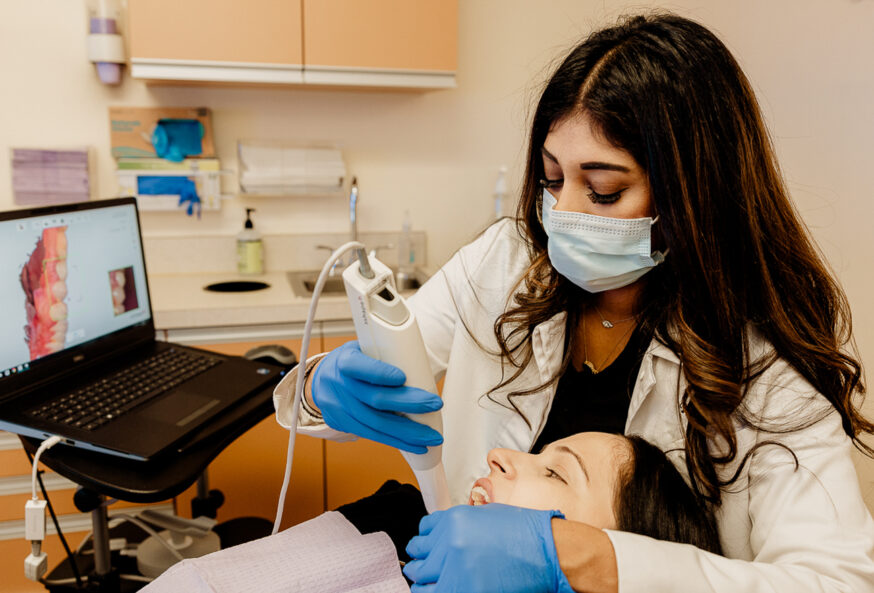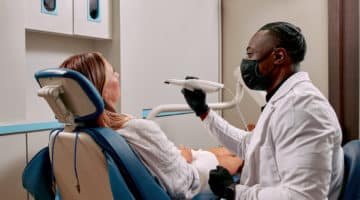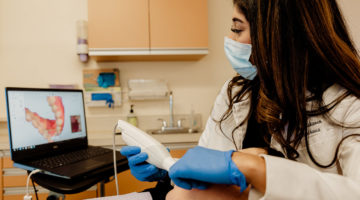Following is our article detailing why this is the perfect time for your dental practice to go digital, if you already are aligned but need to communicate the reasons to your partners and decision-makers, you can access our comprehensive guide to doing so here.
Digital transformation is sweeping the medical field, and the dental industry is no exception. Impressive technical advances in scanning, communicating, ordering, and manufacturing have raised the bar for dental professionals and patients alike, streamlining services, elevating patient care, and redefining what’s possible in dental procedures.
But while the growing world of new dental technology is exciting, half of US practices have yet to transition to a digital workflow. If going digital can feel challenging due to the perceived investment of time, money, and willingness required to shift work routines, Dandy tears down those barriers (covered in last section). If you are content with the status quo—“why fix what isn’t broken?”—your practice is about to fall behind as over 25% of non-digital offices plan on picking up an intraoral scanner within the year. It is time to prioritize digital dentistry for your practice.
50% of dentists in the US use digital devices
Dandy research
Digital dentistry enables you to:
Stay competitive
The adoption of newer dental technologies allows a dental practice to stay ahead of the curve. Both general and specialized practices can see a return on investment from using intraoral scanning— from increased case acceptance, faster chair turnover, and positive referral benefits from developing a good reputation as a modernized dental practice.
According to Data Bridge Market Research analyses, the digital dentistry market which was $915.6 million in 2021 is expected to undergo a CAGR of 8.7% by 2029 (1). With patients demanding more treatment options, more quickly, and more accurately, going digital is the only way to stay on top of the competition.
Increase accuracy and cost-efficiency
According to research, digital impressions are more efficient and cost effective than standard impressions, and implementation costs can be offset within the first year, making intraoral scanners a worthy investment (2).
Improved visualization accuracy also leads to more consistent restorations, with fewer chairside adjustments or costly re-dos. And without needing to order trays and PVS supplies, there is less operational burden, and money can be saved on impression materials. Overall, revenue increases through faster operator turnover and happier patients.
Bolster patient experience
Patients are increasingly seeking dental practices that are more tech-forward. Why? They want faster appointments, more comfortable impressions, a shorter turnaround time for restorations, and better fits for their restorative procedures. A digital experience can elevate what might once have been a dreaded dental experience, contributing to higher retention and referral rates.
They also expect cutting-edge care, and a sign that their dentist is up-to-date is sometimes just simply seeing the scanner, or if not, seeing their scans does the trick.
By focusing on optimizing the patient experience, dental practices can more effectively grow a loyal customer base and increase referral rates.
Contribute to sustainability
Many dental practices are looking for more sustainable ways to manage their businesses. Thankfully, digital scanning is better for the environment and for your bottom line. No more PVS, trays, or other impression-making materials, and less administrative burden overall for inventorying, managing, and ordering these supplies. Think of all the PVS waste that your practice has put into landfills.
Not only does this contribute to saving costs and the environment, but many patients, particularly those who are Millennials or Gen Z, are likely to prioritize businesses that align with their beliefs (3).
Hire and retain excellent staff
According to the American Dental Association’s Health Policy Institute, 80% of dental practice owners reported challenges in hiring or recruiting hygienists and assistants recently. With the employment aftershocks of COVID-19 still present, hiring and retaining quality employees is paramount to success (4).
Modernizing operations energizes a practice, making it a more attractive place to work. Many newer dental health professionals prioritize working with digital technologies and look for practices that employ them. Adopting digital workflows can make your practice more attractive for talent acquisition and retention, and you’ll reap the benefits from increased patient satisfaction and referrals.
Both staff and patients expect a modern mindset
Check out the chart below and see where you find yourself.
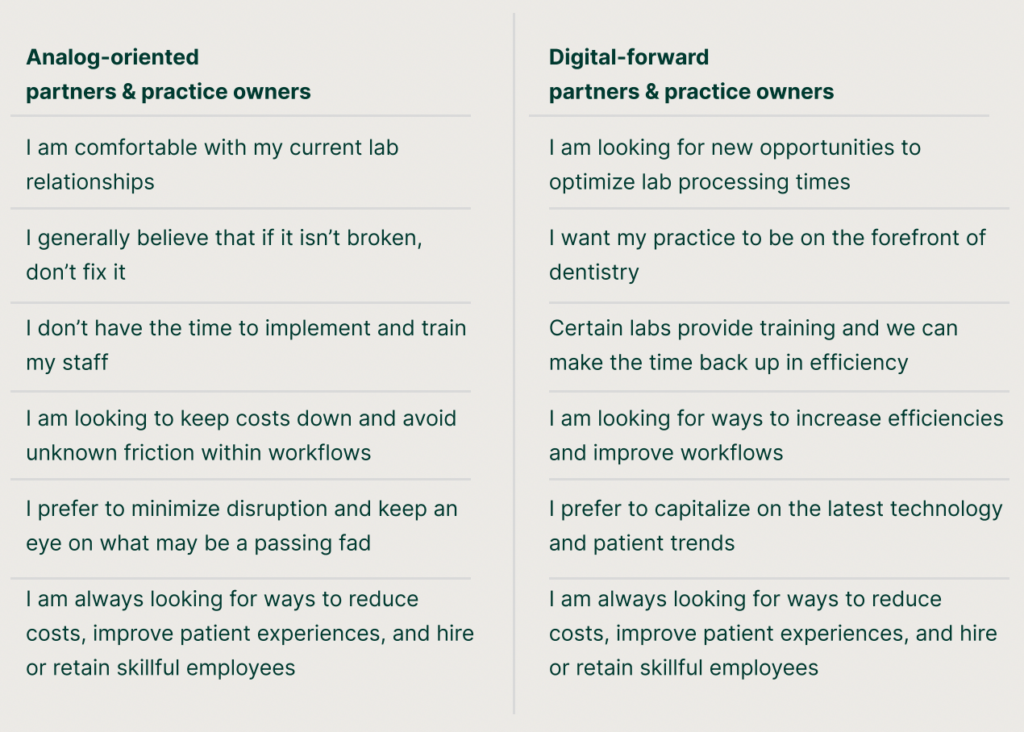
While the ways of thinking may be different, the goals are often the same: save on costs, improve patient satisfaction, and work with excellent staff. The latter two are firmly in the right-hand column.
A bonus for you: Going digital at your practice can shorten appointment times thanks to increased practice efficiency and accuracy, and with the dentist’s time being a valuable commodity, this can free you up to do other work throughout the day.
Go Digital with Dandy
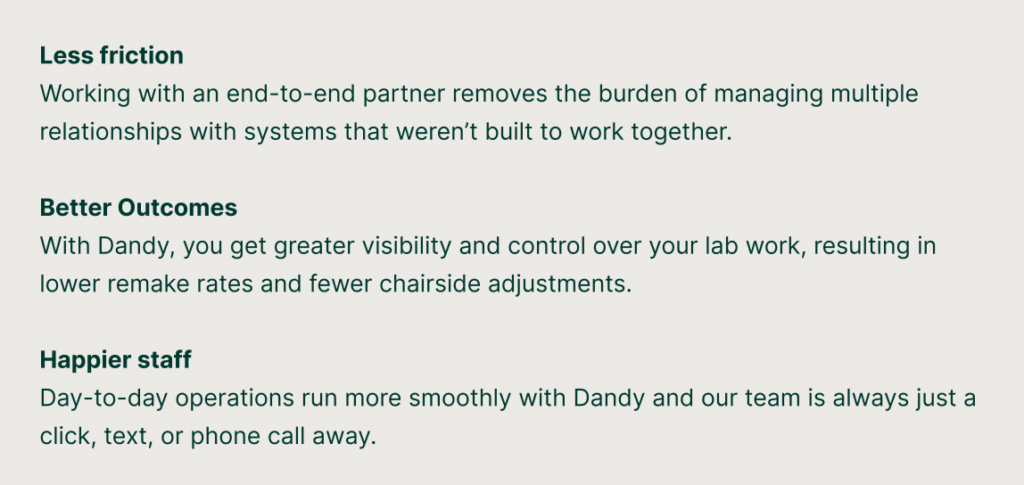
With Dandy, dentists see the investment right away. There isn’t the $30,000 upfront to purchase an intraoral scanner, we provide one for free. Also, we provide training for your staff on the scanner and software and with our real-time support and live scan review—you are never on your own. The result: dental practices are seeing 76% faster production and an 89% reduction in returns. Learn more about the benefits of working with Dandy here or click the icon below the Sources to read our comprehensive guide to communicating the benefits of going digital to your practice partners.
Sources:
1. https://www.databridgemarketresearch.com/reports/global-digital-dentistry-market
2. https://pubmed.ncbi.nlm.nih.gov/30991020/
3. https://pubmed.ncbi.nlm.nih.gov/30991020/
4. https://blog.titanwebagency.com/dental-industry-trends
Talking to dental practice owners about digitizing the lab experience.
In this conversation guide, we’ll explore talking points that you can use to convince practice owners to go digital

